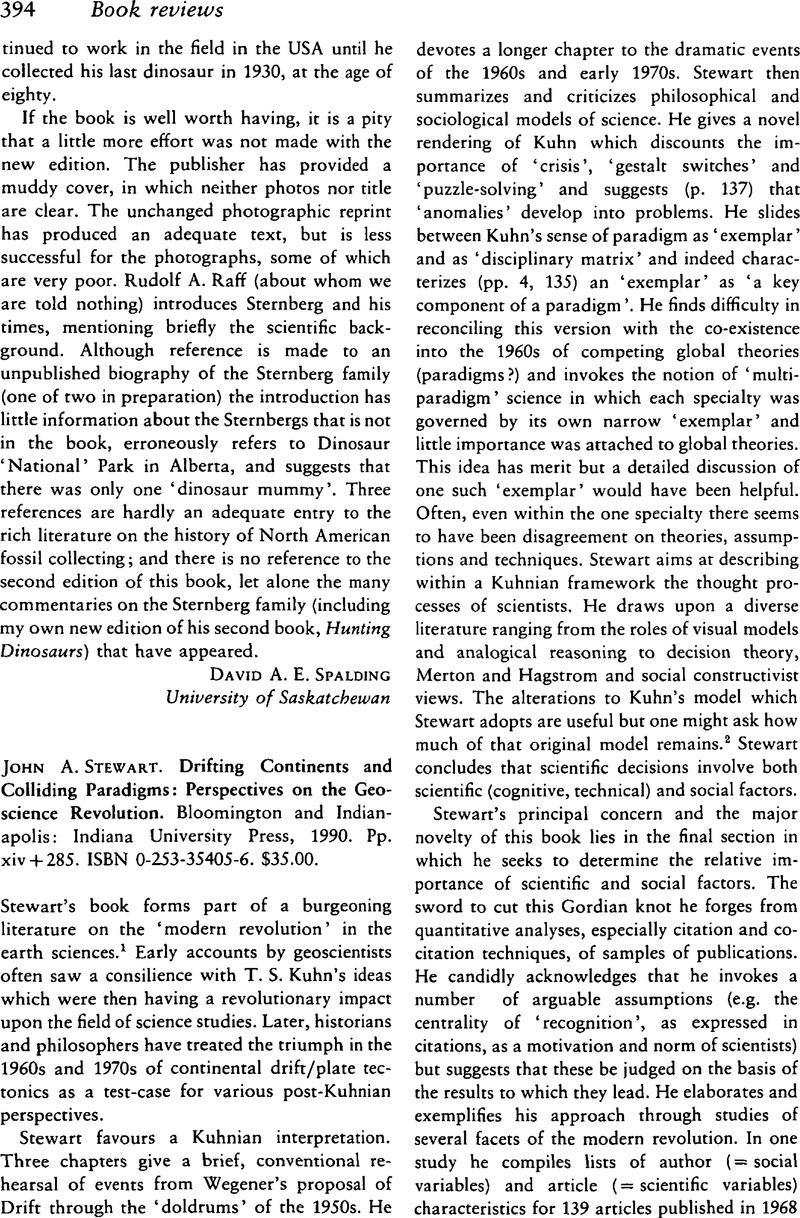No CrossRef data available.
Published online by Cambridge University Press: 05 January 2009

1 A few illustrative examples include: Allwardt, A. O., ‘The roles of Arthur Holmes and Harry Hess in the development of modern global tectonics’ (Ph.D. thesis, University of California Santa Cruz, 1990)Google Scholar; Frankel, H., ‘The career of continental drift theory: an application of Imre Lakatos' analysis of scientific growth to the rise of Drift theory’. Studies in History and Philosophy of Science, (1979), 10, pp. 21–66CrossRefGoogle Scholar; ‘The reception and acceptance of continental drift theory as a rational episode in the history of science’, in Mauskopf, S. H. (ed.), The Reception of Unconventional Science, Boulder, 1979, pp. 51–90Google Scholar; ‘The development, reception and acceptance of the Vine–Matthews–Morley hypothesis’, Historical Studies in the Physical Sciences, (1982), 13, pp. 1–39Google Scholar; Giere, R. N., Explaining Science: A Cognitive Approach, Chicago, 1988CrossRefGoogle Scholar; Glen, W., The Road to Jaramillo, Stanford, 1982Google Scholar; Hallam, , A Revolution in the Earth Sciences, Oxford, 1973Google Scholar; Great Geological Controversies, Oxford, 1983 (2nd edn, Oxford, 1989)Google Scholar; Le Grand, H. E., Drifting Continents and Shifting Theories, Cambridge, 1988Google Scholar; Marvin, U. B., Continental Drift, Washington, 1973Google Scholar; Menard, H. W., The Ocean of Truth, Princeton, 1986CrossRefGoogle Scholar; Oreskes, N., ‘The rejection of continental drift’, Historical Studies in the Physical and Biological Sciences, (1988) 18, pp. 311–48CrossRefGoogle Scholar; Thagard, P. and Nowak, G., ‘The explanatory coherence of continental drift’, PSA 1988, 1, pp. 118–26Google Scholar; Wood, R. M., The Dark Side of the Earth, London, 1985.Google Scholar
2 Giere, , op. cit. (1)Google Scholar, makes many of the same moves, excepting that he rejects functionalist sociology, to develop a ‘cognitive theory of science’ for which he finds support in the ‘modern revolution’.